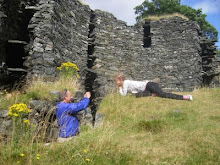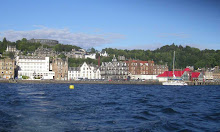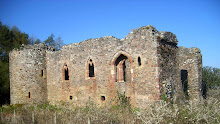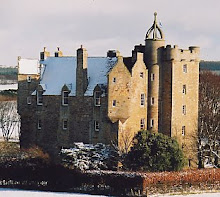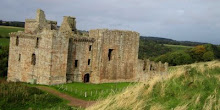 |
| 10th Duke of Roxburghe, by Allan Warren |
The Duke of Roxburghe died on 29th August. He was 64, a tragic victim of cancer. Guy Roxburghe was an impressive man in many ways and was given a substantial obituary in ‘The Scotsman’ and The Times.
However, his achievements would not have been quite so prominently aired had he been plain Mr.
Who are the Scottish Dukes? How relevant are they in 2019?
The oldest and most senior is the Duke of Rothesay (a pleasant town on the Isle of Bute). The title was first given to David Stewart, son of Robert III of Scotland, in 1398. After David’s death it went to his brother, later King James I. Thereafter, the heir apparent to the Scottish Crown has held this dukedom and it is now the title used by HRH Prince Charles when in Scotland.
The other eight dukedoms, with dates of creation, are:
Duke of Hamilton, 1643 (Head of the Houses of Hamilton and Douglas).
Duke of Buccleuch, 1663 (Created for Anne Countess of Buccleuch, widow of the Duke of Monmouth, illegitimate son of Charles II. Chief of Clan Scott)
Duke of Lennox, 1675 (Created for Charles Lennox, illegitimate son of Charles II)
Duke of Queensberry, 1684 (now held by the Dukes of Buccleuch)
Duke of Argyll, 1701 (Chief of Clan Campbell)
Duke of Atholl, 1703 (Chief of Clan Murray)
Duke of Montrose, 1707(support in the Act of Union, Chief of Clan Graham)
Duke of Roxburghe, 1707 (support in the Act of Union)
 |
| Floors Castle by Kelso. Home of the Duke of Roxburghe. |
If you strip out Lennox (lives in England), Atholl (lives in South Africa) and Queensberry (also Buccleuch), we are left with five dukes: Hamilton, Buccleuch, Argyll, Montrose and Roxburghe.
As a body these five are quite impressive: all of them big or massive landowners, four of them clan chiefs and one (Montrose) sits in the House of Lords. The Dukes of Hamilton and Argyll also have ceremonial roles; the latter Master of the Household of Scotland, the former Hereditary Bearer of the Crown of Scotland.
Perhaps more significantly, our dukes own four of the most significant furnished castles in Scotland. The Dukes of Buccleuch have both the magnificent Drumlanrig Castle and charming Bowhill House near Selkirk. The Duke of Argyll has Inveraray Castle (fascinating in its own right and also featured in Downton Abbey!) and the late Duke of Roxburghe was responsible for creating from his splendid home, Floors Castle, with its gardens and grounds, a fascinating and relaxed half day visit.
As a body these five are quite impressive: all of them big or massive landowners, four of them clan chiefs and one (Montrose) sits in the House of Lords. The Dukes of Hamilton and Argyll also have ceremonial roles; the latter Master of the Household of Scotland, the former Hereditary Bearer of the Crown of Scotland.
Perhaps more significantly, our dukes own four of the most significant furnished castles in Scotland. The Dukes of Buccleuch have both the magnificent Drumlanrig Castle and charming Bowhill House near Selkirk. The Duke of Argyll has Inveraray Castle (fascinating in its own right and also featured in Downton Abbey!) and the late Duke of Roxburghe was responsible for creating from his splendid home, Floors Castle, with its gardens and grounds, a fascinating and relaxed half day visit.
 |
| Inveraray Castle, Argyll, home of the Duke of Argyll. |





























































